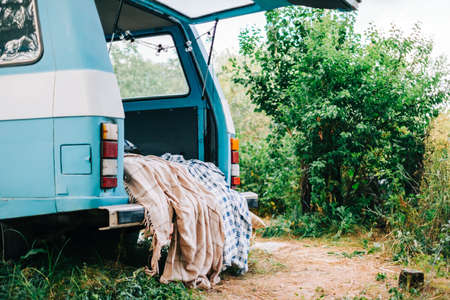1. Introduction: Indian Landscapes Facing Climate Change
India’s diverse landscapes, from the snow-clad peaks of the Himalayas to the lush rainforests of the Western Ghats, have long been havens for camping enthusiasts seeking both serenity and adventure. However, these cherished destinations are now at the frontline of climate change impacts. In recent years, erratic monsoons, unseasonal heatwaves, and shifting wildlife patterns have started altering the very fabric of India’s natural escapes. For campers—whether planning a quick weekend getaway to Rishikesh or embarking on an extended trek through Spiti—these changes pose new challenges and call for a renewed sense of responsibility. As we witness fragile ecosystems adapting under pressure, mindful travel becomes not just a trend but a necessity. Understanding how climate change is reshaping our favorite camping spots helps us appreciate their value and encourages us to protect them for future generations.
Weekend Camping Getaways: Local Solutions, Smaller Footprints
With climate change impacting every corner of India, more eco-conscious campers are rethinking how they connect with nature. Weekend camping getaways—quick escapes to local natural spots like the Sahyadris, Aravallis, or Western Ghats—are gaining popularity over long-haul adventure trips. These shorter journeys offer unique environmental benefits and align with Indian values of resourcefulness and mindful consumption.
Environmental Benefits of Short-Term, Local Camping
Choosing destinations closer to home dramatically reduces travel emissions, especially since many Indian campers use public transport or carpooling options. Less distance means less fuel burned, directly cutting down on individual carbon footprints. Additionally, weekend trips encourage minimal packing and waste, supporting the “less is more” approach rooted in the Indian ethos of simple living.
Eco-Friendly Practices Embraced by Indian Campers
| Practice | Local Term/Concept | Impact |
|---|---|---|
| Innovative fixes for equipment reuse | Jugaad | Reduces need for new purchases; extends gear life |
| Using steel tiffins and reusable cutlery | Dabba culture | Cuts down on single-use plastics and litter |
| Group travel and shared logistics | Sangathan (collective action) | Lowers per-person transportation emissions |
| Locally sourced food and ingredients | Farm-to-table approach | Supports local farmers; avoids packaged goods waste |
| Respecting campsite cleanliness (Leave No Trace) | Shramdaan (voluntary service) | Keeps ecosystems healthy for future generations |
Tackling Challenges: Crowding & Ecosystem Sensitivity
The rising trend of short-term camping also brings challenges. Popular sites near metro cities like Mumbai, Pune, or Delhi can become overcrowded during weekends, putting stress on local ecosystems. Noise pollution, improper waste disposal, and trampling of flora are common issues. To counter this, many camping groups are adopting rota systems to limit numbers and rotating campsites based on local community advice—a true reflection of jugaad combined with collective responsibility.
In summary, weekend getaways allow Indian campers to enjoy nature while keeping their environmental impact small. By integrating innovative local solutions with traditional eco-friendly practices, campers contribute positively to both climate resilience and community well-being.

3. Long Adventure Trips: The Impact on Indian Flora & Fauna
Extended camping adventures across India, especially in ecologically sensitive areas like Ladakh or the North-East, present complex environmental challenges. Unlike short weekend getaways, these longer trips mean campers spend more time interacting with the natural environment, which can result in a heavier ecological footprint.
Biodiversity at Risk in Sensitive Zones
Regions such as Ladakh, Sikkim, and Arunachal Pradesh are home to rare species of plants and animals, many of which exist nowhere else. With climate change already stressing these ecosystems, increased human presence—often in the form of larger groups or frequent campsites—can further disrupt fragile habitats. For example, trampling on alpine meadows or improper waste disposal can harm native flora like rhododendrons and even disturb elusive fauna such as the snow leopard or red panda.
Water Resources Under Strain
Long adventure trips typically require more water for drinking, cooking, and cleaning. In high-altitude or remote forests where water is already scarce due to melting glaciers or shifting rainfall patterns, overuse can upset local communities and wildlife. Campers must be mindful of not polluting rivers or lakes, which serve as lifelines for both humans and animals.
Cultural Sensitivity and Local Practices
Indian camping traditions often intersect with indigenous cultures. Following local wisdom—like using biodegradable materials, respecting sacred sites, and practicing ‘leave no trace’ principles—not only preserves biodiversity but also honours the deep-rooted connections between people and nature in these regions.
In conclusion, while long adventure trips offer the thrill of exploring India’s wild beauty, they demand greater responsibility from campers. Adopting eco-friendly habits, supporting community-led conservation efforts, and educating fellow adventurers can help ensure that our journeys leave minimal impact on India’s precious natural heritage.
4. Managing Waste: Swachh Bharat Moments in the Wild
When camping in India, whether for a quick weekend getaway or an extended adventure, waste management becomes a crucial responsibility. The Swachh Bharat Abhiyaan (Clean India Mission) has ignited a nationwide movement, inspiring campers to carry its spirit into forests, hills, and riversides. Every camping trip becomes an opportunity for “Swachh Bharat Moments,” where responsible choices help protect our beautiful natural heritage from the growing impact of climate change.
Adapting Leave No Trace with Indian Wisdom
Traditional Indian communities have long practiced respect for nature by minimizing waste and returning resources to the earth. Modern Indian campers blend this indigenous wisdom with the globally recognized Leave No Trace principles. This means not only cleaning up after oneself but also actively removing litter left by others, segregating biodegradable and non-biodegradable waste, and using eco-friendly alternatives whenever possible.
Simple Waste Management Tips for Indian Campers
| Action | Weekend Getaway | Long Adventure Trip |
|---|---|---|
| Carry reusable utensils & bottles | Essential—reduce single-use plastics at picnic spots | Vital—lighter loads and less trash over days/weeks |
| Segregate waste (dry/wet) | Collect in separate bags; dispose at nearest facility on return | Create temporary compost pits for organics; pack out all non-biodegradables |
| Use eco-friendly soaps & cleaners | For short stays, use minimal quantities near water sources | Stock up on biodegradable products for longer use, avoid contamination of streams/rivers |
| Participate in campsite clean-ups (“Swachh Camps”) | Organize mini clean-ups with friends/family before leaving | Join/organize larger group drives along trekking routes or riverbanks |
| Avoid packaged foods with excess wrappers | Pack home-cooked snacks in cloth pouches or dabbas | Buy local produce en route; reduce packaging burden over time |
Towards Zero Waste Camping Culture in India
The journey towards zero waste camping is ongoing but essential in the face of climate change. By integrating Swachh Bharat values and adapting traditional ecological knowledge, Indian campers can ensure every outing leaves nature as pristine as they found it—or even cleaner. Let every trip be a celebration of conscious living, one that inspires others to follow suit across our diverse landscapes.
5. Sustainable Travel Hacks: From Roti-Kapda to Reusable Gears
As Indian campers respond to climate change, a growing movement is emerging—one that blends traditional wisdom with modern sustainable practices. Here are some practical hacks inspired by our roots and shaped for todays eco-conscious traveller.
Embracing Roti-Kapda Values in the Outdoors
For generations, Indian families have prioritised essentials—roti (food), kapda (clothing), and makaan (shelter). When camping, this philosophy encourages minimal packing: carry only what you truly need. Light backpacks mean less fuel used in transport, whether by train or shared cab, reducing your carbon footprint right from the start.
Reusable Thalis & Steel Bottles: Ditching Single-Use Plastics
Many Indian campers now pack reusable steel thalis, tumblers, and water bottles—a nod to our tiffin-carrying tradition. This simple swap eliminates piles of disposable plates and plastic bottles at campsites. Stainless steel is durable, easy to clean even at remote riversides, and keeps our surroundings free from litter.
Sourcing Local: Support Desi Farmers & Reduce Miles
Instead of packaged foods or imported snacks, more adventurers are sourcing fruits, vegetables, and even fresh rotis from local markets near their camping destinations. This not only supports small farmers but also reduces food miles and packaging waste. Plus, nothing beats a breakfast of poha or upma cooked on a campfire using regional ingredients!
Simple Vegetarian Meals: Low Impact, High Nutrition
Choosing sattvic (vegetarian) meals isn’t just about tradition—it’s also climate-smart. Dal-chawal, sabzi-roti, or khichdi require fewer resources to produce than meat dishes and create less waste while offering balanced nutrition. Many campers pre-mix spices at home in tiny dabbas to avoid carrying excess packaging or single-use sachets.
Minimal Packing & Mindful Consumption
The mantra “less is more” guides many Indian eco-campers today. By packing light, sharing resources like stoves and tents among friends, and reusing old clothes as cleaning rags or multipurpose cloths, campers can significantly cut down on both waste and weight. Every little choice—from borrowing a trekking pole instead of buying new to refilling masala dabbas—adds up to a greener getaway.
Adopting these simple yet effective hacks not only honours our cultural heritage but also ensures that India’s wild spaces remain beautiful for future generations of travellers seeking adventure with responsibility.
6. Community, Culture, and the Future of Indian Outdoor Adventures
As India’s camping community grows, there is a unique opportunity to blend traditional wisdom with modern climate consciousness. Indian society has always valued collective action—whether it’s sharing food on a trek or working together to clean up after a campfire. These communal values are at the heart of responsible camping, especially as climate change brings new challenges to our forests, riversides, and mountains.
Local knowledge passed down through generations offers practical solutions for sustainable camping. For instance, indigenous methods like using banana leaves instead of plastic plates, or understanding which plants are safe for firewood without harming local biodiversity, can reduce our environmental footprint. By respecting these age-old practices and combining them with eco-friendly innovations—like solar lanterns and reusable water bottles—Indian adventurers can lead by example in climate-smart outdoor living.
With rising environmental awareness, more campers are prioritising leave-no-trace principles and supporting community-led conservation efforts. Weekend getaways become not just escapes from city life but opportunities to learn about local ecology and contribute to its preservation. Long adventure trips can foster deeper connections with tribal communities who act as stewards of the land.
The future of Indian outdoor adventures lies in this synergy: celebrating our diverse cultures while being mindful of nature’s limits. By fostering collaboration between campers, local guides, and conservationists, we can build a resilient camping culture that respects both people and the planet. Let us encourage each other to tread lightly, share resources, and spread awareness—so that India’s natural beauty remains vibrant for generations of adventurers to come.


